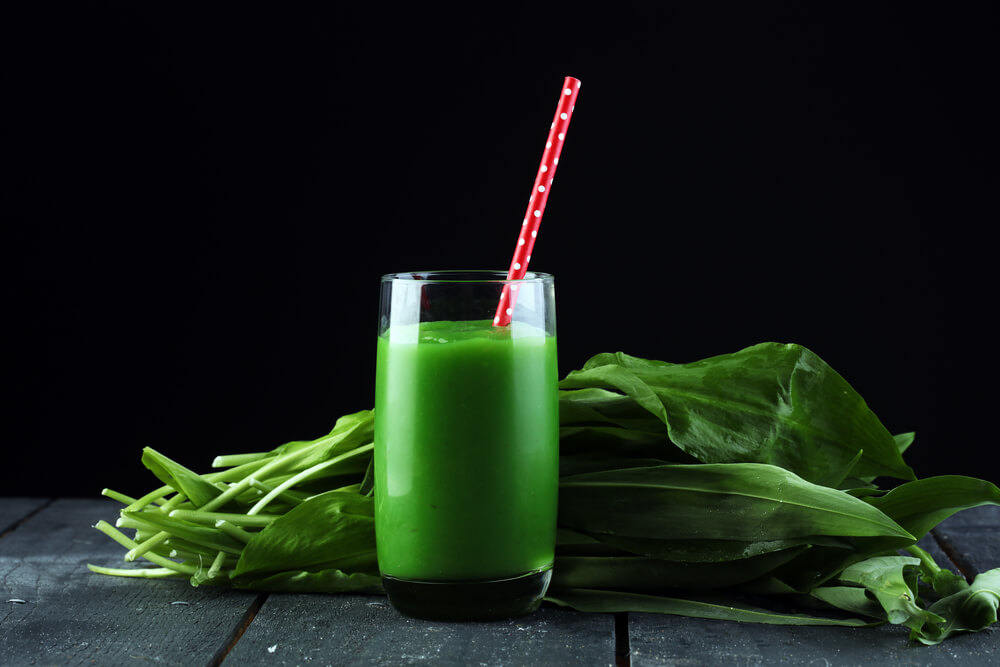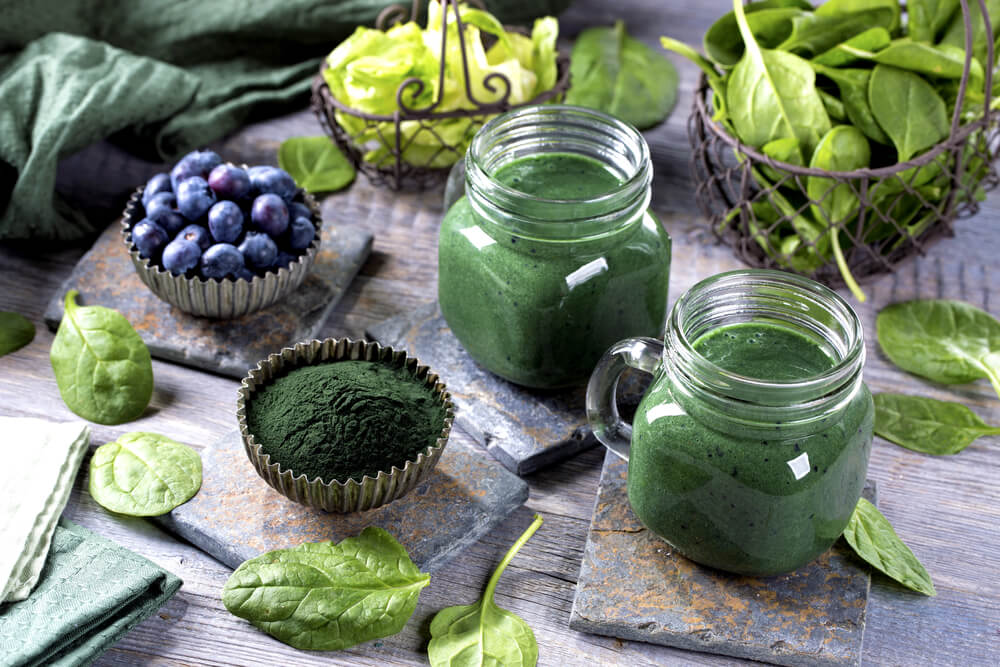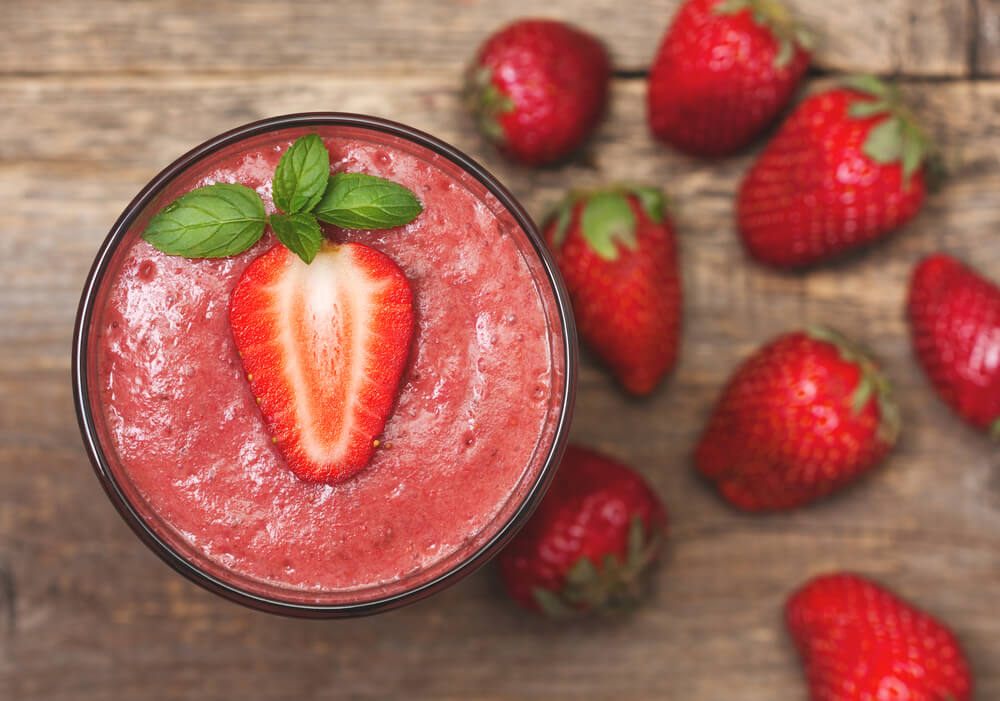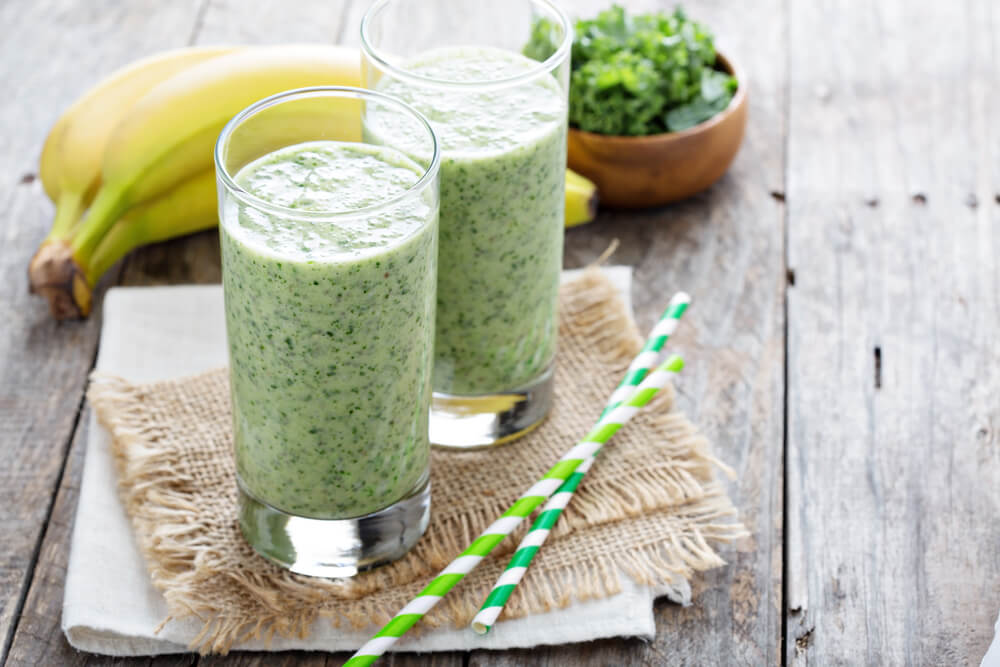
Turn on the television to any daytime talk show and they are almost always going to be jabbing about the latest “superfood.” These are supposed to be the latest foods to do everything from boost your mood to your immune system.
While many of these TV show “doctors” are usually trying to push a product or their agenda, there are superfoods out there that can pack a wallop and deliver excellent health benefits.
One of the best ways to consume these superfoods quickly is through a smoothie.
But how can you identify these superfoods and make smoothies without packing on too many calories?
We’ve got the answers for you right here.
So What Makes a Superfood So Super?
Superfood has become a bit of a catchphrase as of late.
After all, if it is “super” it must mean it is better than all other foods out there, right?
Well, there are some foods that naturally are better for you than others, but the handful of foods are deemed to be “super” based on the overall nutritional density of the food.
Basically, it packs an essential vitamin and nutrients within the food than what most others offer. With this in mind there, there isn’t an actual checklist for what makes superfood. Basically, there will be a dietician somewhere who decides to call something “super.”
Maybe it sticks, maybe it doesn’t, but in general most dieticians do agree on the general makeup of foods in this category (most dieticians actually think the term is more of a marketing term for foods that have excellent food benefits, but when you’re trying to sell healthy foods in the land of sweets and chocolate, you have to do what you can) (Live Science, 2015).
So, in short, superfoods are rich in vitamins and minerals while typically low in fat and calories. The vast majority of foods that fall into this category are plant-based, although there are a handful of animals on the list as well. It is important to look at the product packaging if a food markets itself as a “superfood” though because there are no clear-cut definitions.
The last thing you want to do is assume you are purchasing a superfood, only to find it is a raspberry deep fried in chocolate sauce.

What Is A Superfood?
You might think this would be a rather easy answer to come up with.
However, as so many publications have earmarked different foods as “super”, there is not a clear-cut list. So, we’ll go over the most commonly identified superfoods that are nearly unanimously identified as such.
If you decide to pick up a superfoods smoothie recipe book, it may include other ingredients. Just make sure to always be mindful of exactly what you’re putting into it. Not just for the superfoods, but for the additional ingredients.
According to the British Dietetic Association (BDA), just about every unprocessed, naturally grown food can be considered a superfood. That should, thankfully, give you plenty of options when it comes to your smoothies (especially if you’re considering a smoothies diet for a few days or extended period of time). The 10 foods the BDA recommends at the height of its superfood list include broccoli, green tea, garlic, beetroot, chocolate, goji berries, blueberries, pomegranate, wheatgrass and oily fish (NHS, 2015).
These 10 Superfoods are uses as examples for other goods. Blueberries, for example, are some of the most commonly identified superfoods, but raspberries, strawberries, blackberries and most other fruits that fall into the berry category can easily replace it.
What Makes Some of These Foods so Super?
Now that you’ve seen chocolate on the list of super foods, does that mean you can go out and start snacking away on Snickers and chocolate ice cream?
Well, you could, but it wouldn’t help you with any real dietary needs.
Chocolate, more importantly, dark chocolate, is on the list though for a few reasons. Dark chocolate does have links to helping low blood sugar and it also helps safeguard against bowel cancer. The food has also been found to reduce stress levels and even prevent stroke.
It is in moderation and it heavily depends on the kind of chocolate you use.
It must be dark chocolate with a higher percentage (think 60% and higher).
This reduces the amount of sugar in the chocolate. So while you shouldn’t go to town on an entire sheet of baking chocolate, tossing in a square of dark chocolate into the occasional smoothie does have substantial health benefits.
So while you shouldn’t go to town on an entire sheet of baking chocolate, tossing in a square of dark chocolate into the occasional smoothie does have substantial health benefits.
Chocolate realistically needed the most explanation for being included in the list. It is also the only real ingredient recommended by the BDA you shouldn’t put in all of your smoothies (although you likely won’t want to include fish either). But every other item on the list (and many not on the list) have so many health benefits it is impossible to ignore, which is what makes the foods so super.
Blueberries, for example, are packed with fiber, manganese, antioxidants, vitamin C and others. Plus, a healthy intake of blueberries can reduce your chances of a heart attack, it reduces high blood pressure, reduces your chances of cancer and it can improve your memory (NHS, 2015).
I Need Real Energy! How in the World Can I Get That From Superfood Smoothies!?
If you’ve been going to the gym for some time, chances are you’ve come across the occasional individual who is boasting about their “all smoothie” diets.
These kinds of people come in two categories:
the ones who make smoothies at home and the ones who buy them online. There are some great smoothie “diets” online if you’re up for paying way too much money for prepared smoothie powder.
There really is no need to go out and spend hundreds of dollars a month on pre-packaged smoothies. Beyond the fact that it’s just too much and you can make all the smoothies for a fraction of the price. It is because once you process fruits and veggies down to a powder, you are losing out on many of the health benefits.
This makes the smoothies a little less super.
But back to the main question, how in the world can you make smoothies when you need some real energy?
It is one of the main reason why the person in the office cubicle next to yours gave up their smoothie diet. They just didn’t have the energy.
Switching from a processed diet to a smoothie diet can give you initial energy by removing the processed foods from the system. However, this energy is short lived as the transition doesn’t take too long. You’re not receiving fats for energy, so now you need to rely on proteins and carbs. If you’re sticking with only superfoods, you’ll miss out on proteins as well. Thankfully, you can locate plenty of carbs for energy in superfood smoothies.
There are plenty of fruits out there with a surprisingly high level of carbs.
A mango, for example, has just shy of 100 grams of carbs. This makes including a mango into a smooth a great option for when you want a high boost of energy. Bananas and apples are other fruits to consider when you want to naturally boost your energy level without adding non-super foods to your smoothies.
But we’ll get into a few different recipe options and examples for ways to tinker with your superfood smoothies in the next section.
Superfood Smoothie Examples
To get you started right, we’ll go into a few smoothie examples. You can always tinker with your own recipes until you make something that fits your taste buds, but feel free to try out some of these.
The Strawberry and Goji Berry Smoothie:
You’ll need two tablespoons of goji berries (if you can only find dried goji berries, that is fine), a cup of strawberries, two teaspoons of honey, two cups of almond milk and ice. Blend it all together and you’ll have a great, healthy smoothie. You can have this one at any time but realistically it is probably a good in-between meals option. The honey gives it the added kick of sweetness you’ll love, without adding in sugar. It does have a bit of protein from the almond milk to help sustain you between meals and it is also loaded with vitamins.
Kale and Peanut Butter Smoothie:
You’ll need two cups of kale leaves (remove the stems), 3/4 cup of milk, a cup of bananas, 1/4 cup of Greek yogurt, 1/4 cup of pineapple, two tablespoons of peanut butter and 1-3 teaspoons of honey to meet your sweetness needs.
This is an excellent meal replacement smoothie or a pre-workout smoothie.
It is going to pack in almost 30 grams of protein (depending on your milk and peanut butter). Even if you’re not a kale fan, it goes pretty well with the banana and other ingredients (in fact, you won’t taste much of it).
That is also why you can alter the amount of honey you put in.
Tips on Adding Non-Superfood Ingredients
Alright, so we gave you an example of an in-between meal superfood smoothie and a meal/pre-workout smoothie. These should be great examples to get you started (and there are plenty of other recipes out there online). What is important though is to know how to pick the non-superfood ingredients to add. As you can tell, the meal replacement smoothie has a good amount of non-superfoods. You don’t want to kill your health dreams by using something that doesn’t work.
Peanut butter is one of those foods that can be great, but probably 90% of the peanut butter out there you should skip.
Just look at the label.
The peanut butter should only say “ingredients” peanuts, salt.” However, most are going to include a dozen different ingredients.
That’s no good.
So pick up only peanut butter with peanuts and salt listed. Anything else and you’re adding processed simple carbs in the form of sugar. Realistically, if the food you’re adding to your superfood smoothies comes out of a container, make sure to read the label and nix most items with added sugars.
Let’s say you want to really add the protein though and go easy on fat and carb additions. Milk is good, but it still has a good amount of fat in it. Skim milk is better, but you’ll cut some of the protein and almost all of the taste. You can add a scoop of your best tasting protein powder instead. In fact, if you really want a mighty protein drink, take the meal-replacement option and add in a scoop of protein powder.
Now you’re up to almost 60 grams of protein.
Keeping Your Superfood Fresh
When switching to smoothies, either as an occasional meal replacement or a full-time diet, you’ll have more fruits and veggies on hand.
You don’t want items to spoil, so what in the world can you do?
For starters, don’t feel bad if you have to purchase frozen fruit. Frozen is better than canned as it usually doesn’t include added sugar (check, just to be sure though). It also is often cheaper if the fruit isn’t in season.
Also, if you have bagged kale or spinach and you notice it gets too soggy, pour it into a container with a lid and flip the container every day or so. This prevents moisture from building up (you can also add a paperwork to the bottom to help absorb it). This will extend the life of your greens for a few days longer.
Conclusion
If you’re looking for a great way to add more fruits and veggies into your diet, smoothies is the way to go. While you do need to watch the ingredients you put into smoothies as it is far too easy to go overboard with fats and calories, by sticking with very specific ingredients, you’ll instantly gain the kind of nutrients superfood smoothies can provide.
Whether you use the smoothies as a meal replacement or as a natural sugar and energy booster in between meals, now is the perfect time to start up your superfood smoothies recipes.
-Terry Asher
Terry Asher
Latest posts by Terry Asher (see all)
- Better Family – Product Review Liquid Daily 2 oz - Dec 16, 2024
- Post-Workout Recovery: The Key to Optimal Performance - Nov 25, 2024
- Pre-Workout Supplements – Everything You Need To Know - Nov 18, 2024












[…] post How To Make Superfood Smoothies appeared first on Gym […]
Thanks for the article Terry.
These nutrition articles are great as most of your health is made in the kitchen. Keep them coming!!
Thanks Ben!
Glad you enjoyed it, and agreed most of your health is made in the kitchen 🙂
-Terry Asher
I’m just now starting to incorporate smoothies into my daily routine. I especially noticed your extra notes about peanut butter and trying to avoid the standard stuff since it’s all full of sugar. So what about that “peanut butter powder” I’ve started seeing in the grocery store? Is that a better option?